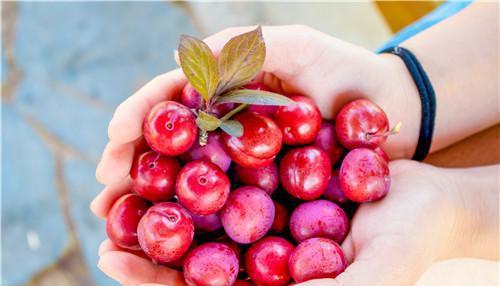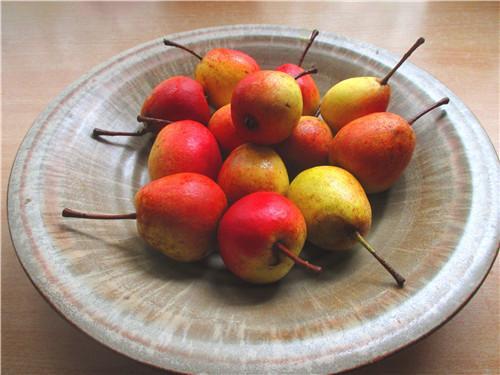"Stone fruit (Stone Fruit)" Chinese name for "hard core fruit", mainly refers to the outside of the thin skin, soft and juicy flesh, with a hard core of the fruit. In terms of specific analogies, it can be divided into two categories: sticky and non-sticky kernels, and varieties include peaches, plums, cherries, nectarines, apricots, mangoes, lychees, olives, and jujubes, etc. These fruits have been recognized for their nutritional value, cultivation, and their ability to grow. These fruits play different roles in the global market due to their nutritional value, cultivation requirements and processing capacity, among which peaches and nectarines have become a large-scale category of international trade in "stone fruits" due to their relatively low requirements on the growing environment, large yield and ability to be stored for a long time after processing, and relatively good taste, which meets the needs of different regions and social groups. The United States is the world's largest producer of peaches and nectarines.
The United States is an important player in the global peach and nectarine. USDA monitoring data show that this year (2023/04 growing season), the United States of America's peach and nectarine production will likely fall to a 40-year low, is expected to be only 574,000 tons. Many of the main U.S. peach and nectarine producing regions have been affected by unusual weather. Weather such as heavy rainfall and cold temperatures in California prior to fruit bloom, and freezing temperatures in South Carolina and Georgia after fruit bloom in March were the primary causes of the reduced production. After maintaining steady production for nearly 30 years, U.S. peach and nectarine production showed a unilateral decline beginning in the 2011/12 growing season, gradually dropping from 1.2 million tons to a level of 700,000 tons. Over the past five years, U.S. peach and nectarine production has remained essentially stable, with annual production ranging from 650,000 to 710,000 tons. As the state that produces 80 percent of U.S. peach and nectarine production and almost 100 percent of the processed fruit supply, California has a significant impact on the national supply. Weakening demand for processed peach products in the global marketplace has had a significant impact on California's sticky walnut seed production. This growing season, California's sticky walnut seed production declined 43 percent and nectarine production fell below 100,000 tons for the first time since the 1970s, creating an expected change in both the domestic U.S. consumer market and global trade. This year, U.S. exports of peaches and nectarines will fall by 11,000 tons to 50,000 tons, while imports remain at a lower level of 32,000 tons, with increased shipments from Mexico compensating for the decline in Chile.

Looking globally, fresh peach and nectarine production will be expected to increase by 827,000 tons to 25 million tons this year. The main production increases will come from China and the EU. Global exports of both types of fruit will also increase by 62,000 tons to 874,000 tons, supported by a recovery in supply capacity in Spain. On the import side, rising demand from Iraq and Kazakhstan is expected to push global imports of both fruit types up by 21,000 tons to 852,000 tons.
China plays a major role in the supply and demand relationship for peaches and nectarines, not only producing and exporting, but also consuming the vast majority of the output. Although the northern provinces suffered from low temperatures and snow this year, better growing conditions in the southern provinces compensated for the disadvantages in the north. The increase in unit production has also offset a reduction in planted acreage, and this year China's peach and nectarine production is expected to increase by 500,000 tons to 17.5 million tons, reaching 70 percent of the total output for the global market. However, there have also been a number of farmers switching from peaches to cherries, influenced by yields, which, together with management to avoid land de-financing, could lead to further reductions in the future area under cultivation for both types of fruit. This year, China's exports of peaches and nectarines are likely to remain largely unchanged at 600,000 tons, or about 3.4% of China's production. From a trade perspective, the decline in China's exports to Kyrgyzstan is essentially of the same size as the rise in exports to Vietnam, and its contribution to global consumption of both types of fruit remains stable.
Peach and nectarine production in the EU is expected to increase by 401,000 tons to 3.7 million tons. Favorable weather in Spain this year offset the impact of unfavorable weather in Italy, Bulgaria, Hungary and Poland. As a result, EU peach and nectarine supplies will reverse three consecutive years of decline and could rebound by a whopping 36% from last growing season to 170,000 tons, essentially returning to 2020/21 growing season levels. The EU will still maintain 40,000 tons of peach and nectarine imports, mainly from Turkey.

Turkish peach and nectarine production is expected to continue this year at last year's record high of 1 million tons. Peach acreage has remained essentially unchanged over the past 10 years, but variety improvements have continued to increase unit yields. The production share of nectarines has increased, and Turkish-produced exports of nectarines to Russia, Iraq, and the EU have maintained their increase. This year, Turkey's peach and nectarine exports may increase for the fourth consecutive year, up 11,000 tons to 215,000 tons.
Chile and Russia are also important players in the global peach and nectarine trade. While Chile's production this year is expected to remain at the same level as the previous year at 164,000 tons, exports could reach 105,000 tons, or 64.0 percent of production. Russia's imports have remained essentially unchanged at a level of 315,000 tons, making it the world's top importer and accounting for almost 40% of total global imports. Turkey is the main import source for Russian peach imports.

